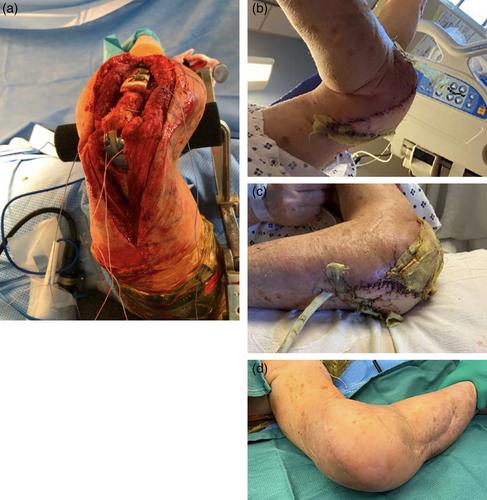Free flap reconstruction of elbow soft tissue defects: Lessons learned from 15 years of experience
Abstract
Background
The elbow is a complex joint that is vital for proper function of the upper extremity. Reconstruction of soft tissue defects over the joint space remains challenging, and outcomes following free tissue transfer remain underreported in the literature. The purpose of this analysis was to evaluate the rate of limb salvage, joint function, and clinical complications following microvascular free flap coverage of the elbow.
Methods
This retrospective case series utilized surgical logs of the senior authors (Stephen J Kovach and L Scott Levin) to identify patients who underwent microvascular free flap elbow reconstruction between January 2007 and December 2021. Patient demographics and medical history were collected from the medical chart. Operative notes were reviewed to determine the type of flap procedure performed. The achievement of definitive soft tissue coverage, joint function, and limb salvage status at 1 year was determined from postoperative visit notes.
Results
Twenty-one patients (14 male, 7 female, median age 43) underwent free tissue transfer for coverage of soft tissue defects of the elbow. The most common indication for free tissue transfer was traumatic elbow fracture with soft tissue loss (n = 12, [57%]). Among the 21 free flaps performed, 71% (n = 15) were anterolateral thigh flaps, 14% (n = 3) were latissimus dorsi flaps, and 5% (n = 1) were transverse rectus abdominis flaps. The mean flap size was 107.5 cm2. Flap success was 100% (n = 21). The following postoperative wound complications were reported: surgical site infection (n = 1, [5%]); partial dehiscence (n = 5, [24%]); seroma (n = 2, [10%]); donor-site hematoma (n = 1, [5%]); and delayed wound healing (n = 5, [24%]). At 1 year, all 21 patients achieved limb salvage and definitive soft tissue coverage. Of the 17 patients with functional data available, 47% (n = 8) had regained at least 120 degrees of elbow flexion/extension. All patients had greater than 1 year of follow-up.
Conclusion
Microvascular free flap reconstruction is a safe and effective method of providing definitive soft tissue coverage of elbow defects, as evidenced by high rates of limb salvage and functional recovery following reconstruction.


 求助内容:
求助内容: 应助结果提醒方式:
应助结果提醒方式:


